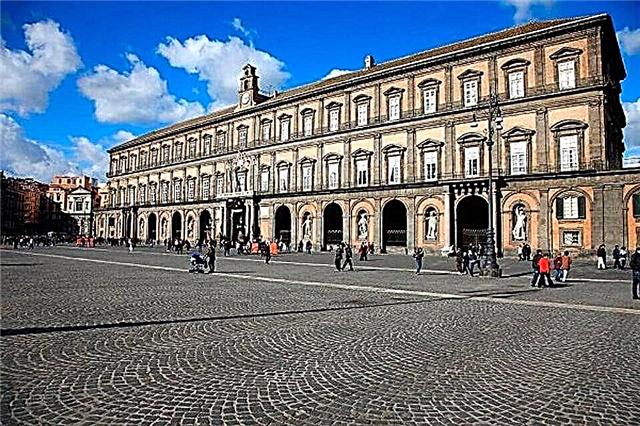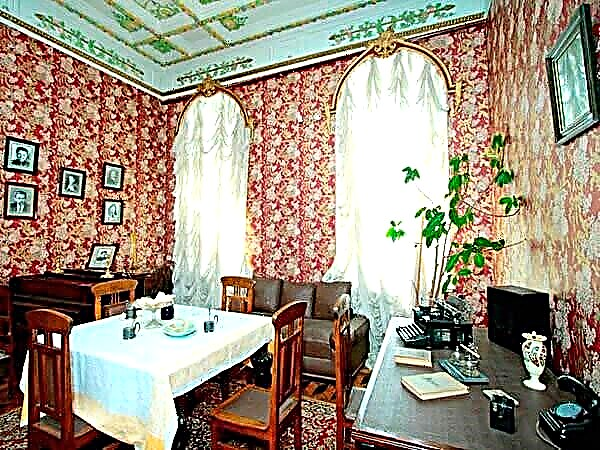Address: Greece, Athens, Athenian Acropolis
Start of construction: 447 BC e.
Completion of construction: 438 BC e.
Architect: Iktin and Callicrates
Coordinates: 37 ° 58'17.4 "N 23 ° 43'36.0" E
Content:
Brief history and description
At the top of the cliffs of the Athenian Acropolis rises the monumental marble Parthenon temple dedicated to Athena Parthenos (i.e. the Virgin) - the patroness of the city. In this monument, the famous politician Pericles embodied the idea of triumphant democracy and the unfading glory of Athens.

View of the Acropolis of Athens and the Parthenon Temple
The Parthenon was built in 447 - 437 BC. e. on the site of an earlier temple, which was erected to commemorate the victory over the Persians in the Battle of Marathon... For the construction of the Parthenon, Pericles spent 450 silver talents, "borrowed" from funds raised for military purposes.
To understand how huge the amount spent was, you can use the following comparison: the construction of one trier (warship) cost 1 talent, that is, for 450 talents Athens could build a fleet of 450 ships. When the people accused Pericles of wastefulness, he replied: “Our descendants will be proud of this temple for centuries!

Temple in the night illumination
If money is more important to you, then I will not write off the costs to your account, but to mine, and on all buildings I will immortalize my name. " After these words, the people, who did not want to give up all the glory to Pericles, shouted that they should attribute the construction costs to the public account. The head of the work was appointed the sculptures of Phidias; he also carved most of the Parthenon's ornaments with his own hands. The consecration of the temple took place in 438 BC. during the festival of Panafinea, held in honor of the goddess Athena. In the Byzantine period, marked by the triumph of Christianity, the Parthenon was turned into the Temple of St. Mary, and the statue of Athena was taken to Constantinople.

View of the temple from the west
In the 1460s, when the Turks captured Athens, the Parthenon was converted into a mosque. But the greatest destruction of the temple was in 1687, during the war between the Venetians and the Turks.when a red-hot cannonball that flew through the roof made a huge explosion.
In the 19th century, the English diplomat T. Elgin, having received permission from the Sultan of the Ottoman Empire, brought from the Parthenon to England an unsurpassed collection of sculptures, which is still kept in the British Museum.

View of the temple from the southeast
The Parthenon is a magnificent example of the Doric style
The Parthenon is a classic ancient Greek temple - a rectangular building framed by a colonnade. According to the standards of ancient Greek architecture, the number of columns of the side facade is 1 unit more than twice the number of columns on the front side of the building (in relation to the Parthenon - 8 and 17). Ancient architects gave the massive temple elegance by developing an optical correction system. From a distance, straight lines are perceived as slightly concave, and in order to eliminate this "defect" the architects made the middle part of the columns slightly thickened, and the corner columns were slightly inclined towards the center, thereby achieving the appearance of straightness.

South facade of the temple
Parthenon sculptures - myths in stone
The Doric frieze of the facade was decorated with bas-reliefs depicting scenes of martial arts: the battle of the Lapiths and centaurs on the east side, Greeks and Amazons on the south, gods and giants in the north, and participants in the Trojan War in the west. The sculptural composition on the eastern pediment is dedicated to the myth of the birth of Athena. As befits the goddesses, Athena was born in an unusual way, namely from the head of Zeus. Legend has it: Zeus swallowed his pregnant wife to prevent the birth of a son who would have dethroned him. Soon the thundering god felt severe pain, and then the blacksmith Hephaestus hit him on the head, and Athena jumped out of there.

Eastern facade of the temple
On the western pediment, the dispute between Athena and Poseidon over the possession of Attica is immortalized in stone, when the olive tree donated by Athena was recognized as a more valuable gift than the source of sea water carved into the rock with Poseidon's trident. Along the perimeter of the outer walls of the temple, at a height of 11 meters from the floor, another frieze, Ionic, stretched like a continuous ribbon. Its reliefs illustrate scenes from the traditional ceremony of celebrating the "Birthday of the goddess Athena" - Panafinea. It depicts horsemen, chariots, musicians, people with sacrificial animals and gifts, etc. The end of the procession is shown at the eastern end: the priest receives the peplos from the Athenian - a new garment woven for Athena. In ancient times, the Parthenon housed a treasury where the treasury of the Athenian maritime union was kept.

Fragment of the eastern facade of the temple
And in the center of the temple stood a 13-meter statue of Athena Parthenos, made of gold and ivory. Alas, the original statue has not survived to this day. In museums around the world, you can see only copies of Phidias' masterpiece, recreated from descriptions.











